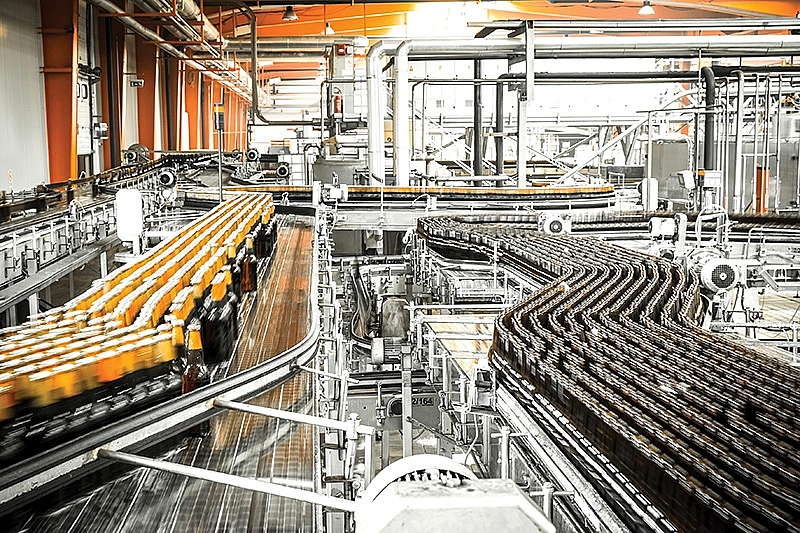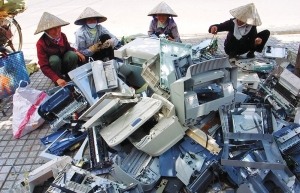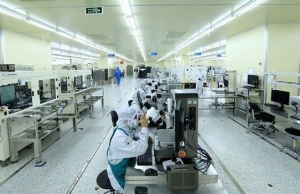ASEAN manufacturing sector sees slight improvement
 |
The purchasing manager’s index (PMI) data by S&P Global Ratings revealed a renewed, but slight, improvement in the manufacturing sector in the ASEAN region at the start of the year.
The PMI rose from 49.7 in December to 50.3 in January, crossing the neutral 50 threshold for the first time in five months - the threshold to confirm the manufacturing industry expands if the index is higher than 50 and narrows if it falls below 50.
Output rose at the quickest pace since last August. The upturn was supported by firms working through backlogs, which fell for the seventh successive month, as new orders declined again.
The latest decline in sales was the weakest recorded in the current five-month sequence of decline, S&P Global Ratings noted in a release. In terms of prices, inflationary pressures intensified, with both input prices and output charges rising at the strongest rates in ten months.
Demand weakness was particularly notable across export markets, and this led overall new orders to decline for the fifth straight month. The rate of contraction was the softest seen over this period and only marginal.
Maryam Baluch, an economist at S&P Global Market Intelligence said, "In the future, manufacturers will not be able to maintain output growth amid demand shortages. The PMI could fall below 50 if new orders continue to decline, signalling many obstacles in the global economy and stagnant demand from foreign markets."
At the national level, growth was recorded across four of the seven ASEAN constituents, with Indonesia leading the upturn by a notable margin. Meanwhile, the most marked deterioration in conditions was seen in Myanmar.
Trade-dependent economies such as Thailand and Malaysia will continue to see production indexes decline, while consumption-based economies such as Indonesia and the Philippines will continue to grow.
Although Malaysia's January PMI increased to the highest level in the past 16 months, it is still in the decline zone. Thailand is also in a similar situation when the number of new orders and backlog of work decreased sharply.
In Vietnam, companies were concerned about business conditions but also hoped that demand and customer numbers would improve. Vietnam's PMI recorded growth again in early 2024 with the threshold above 50 thanks to the increasing new orders and output.
Looking ahead, ASEAN manufacturers continue to express strong optimism when assessing the 12-month outlook for output. The overall level of positive sentiment remained below the historical average, however, despite rising from December.
 | Vietnamese manufacturers show signs of stabilisation amidst market slowdown The Vietnamese manufacturing sector remains in contraction but has shown some signs of stabilisation, with slower reductions in output, new orders, and employment. |
 | Production costs at risk with draft recycling rules Local manufacturers have suggested that authorised agencies should consider a more appropriate level of recycling costs to reduce business expenses. |
 | Local manufacturers display concern over high capital costs Local manufacturers are finding it more difficult to restore their profits this year following a 9-month low industrial growth. |
What the stars mean:
★ Poor ★ ★ Promising ★★★ Good ★★★★ Very good ★★★★★ Exceptional
Related Contents
Latest News
More News
- Global partnerships key to Vietnam’s IFC development (December 26, 2025 | 16:18)
- Vingroup pulls out of bid to invest in North-South high-speed railway (December 26, 2025 | 11:42)
- Strengthening supply chains through trade promotions and customs reform (December 24, 2025 | 14:00)
- PM orders investment model for North–South high-speed rail (December 22, 2025 | 17:43)
- LS Eco Energy to invest in Vietnam rare earth sector (December 22, 2025 | 17:31)
- Government moves to establish International Financial Centre (December 21, 2025 | 21:00)
- Vietnam's IFC to target global investment flows (December 21, 2025 | 18:00)
- Two national hospitals expand capacity with new facilities (December 20, 2025 | 09:00)
- Ha Tinh breaks ground on major Vingroup industrial and energy projects (December 19, 2025 | 18:24)
- EVN launches major power infrastructure projects nationwide (December 19, 2025 | 18:17)

 Tag:
Tag:



























 Mobile Version
Mobile Version